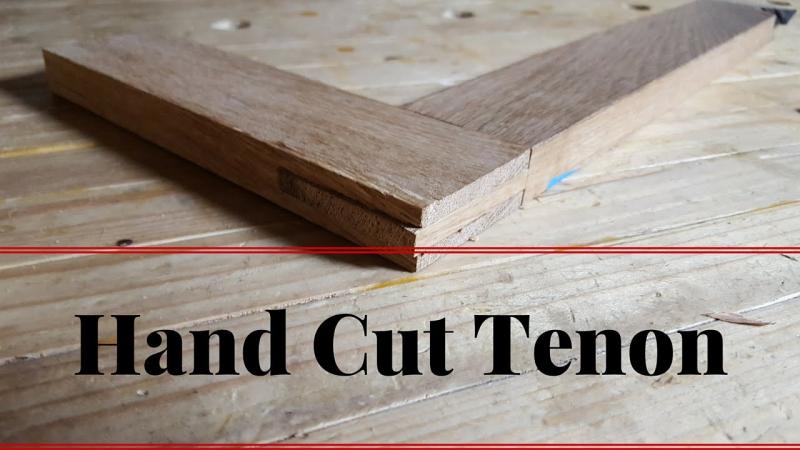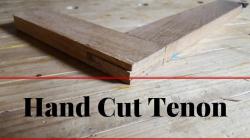How do you cut a tenon?
Cutting a tenon in woodworking is a fundamental joint-making technique used to connect two pieces of wood. Tenons are typically used in conjunction with mortise joints, creating a strong and durable connection. Here are step-by-step instructions on how to cut a tenon:
Tools and Materials Needed:
- Table saw, bandsaw, or tenoning jig
- Marking tools (pencil, marking gauge)
- Chisels
- Mallet
- Combination square
- Workbench
- Safety glasses and hearing protection
- Clamps
Step 1: Measure and Mark
Start by measuring the length and width of the tenon you need on your workpiece. Use a pencil and a combination square to mark the tenon's length on the edge of the board.
Use a marking gauge to set the width of the tenon. Adjust the gauge to your desired width and scribe lines on both faces of the board where the tenon will be.
Step 2: Cut the Cheeks (Sides) of the Tenon
Set up your saw for cutting the cheeks of the tenon. A table saw, bandsaw, or a tenoning jig attached to a table saw are common tools for this.
Position your workpiece vertically on the saw, so the cheek lines are parallel to the saw blade.
Adjust the saw's height or the tenoning jig to match the tenon's length. Make sure the blade's height is set to match the tenon's width.
Carefully make the initial cuts on both sides of the tenon. Keep the board steady against the fence and use a push stick or a tenoning jig if necessary to ensure safety.
Make additional cuts, removing material between the initial cuts, until the cheek of the tenon is fully formed.
Step 3: Cut the Shoulders of the Tenon
After cutting the cheeks, it's time to cut the shoulders of the tenon. Adjust the saw's fence so that the distance from the blade to the fence matches the tenon's length. Ensure that your workpiece is flat on the saw table.
Carefully cut the shoulders by making passes along the top edge of the board. Keep the board against the fence, and make sure the cuts are square to the cheek lines.
Step 4: Clean Up the Tenon
With the tenon's cheeks and shoulders cut, you'll have a tenon that's still attached to the workpiece by its edges.
Use chisels and a mallet to clean up the edges of the tenon. Start by making shallow cuts across the grain to define the tenon's edges. Then, chisel away the waste material, working your way down to the marked tenon lines.
Use the chisels to make the tenon's edges flat and smooth. Check your work with a combination square to ensure the tenon is square to the board.
Step 5: Test Fit
Before final assembly, it's a good practice to perform a test fit. Make sure the tenon fits snugly into the corresponding mortise.
If the tenon is too tight, you can make minor adjustments with a chisel. If it's too loose, you may need to recut the tenon or use shims or wedges to secure the joint.
Step 6: Assembly
Once you're satisfied with the fit, apply glue to the tenon and insert it into the mortise on the corresponding workpiece.
Use clamps to secure the joint and let the glue dry as per the manufacturer's instructions.
That's it! You've successfully cut and fitted a tenon joint. With practice, you can refine your tenon-cutting skills and use this technique in various woodworking projects.
How to cut a tenon in woodworking and what are the key steps involved?
Cutting a tenon, which is a square or rectangular protruding piece of wood that fits into a corresponding mortise, is a fundamental skill in woodworking. Here's a step-by-step guide on how to cut a tenon in woodworking:
Mark the location of the tenon: Determine the exact location where you want to cut the tenon on the piece of wood. Use a marking gauge, marking knife, or pencil to scribe a line along the edge of the wood where the tenon will be cut.
Choose the cutting method: There are various methods for cutting tenons, including the following:
- Router and guide: Use a router and a tenon jig or guide to create precise and consistent tenons.
- Table saw and dado set: Set the table saw to the desired depth and use a dado set to cut the tenon.
- Hand saw and chisel: Use a hand saw to rough out the shape of the tenon and then carefully pare the sides and ends with a chisel to achieve the desired dimensions.
Cut the tenon: Clamp the workpiece securely to a workbench or sawhorse. Use the chosen method to cut the tenon along the marked line. Ensure that the tenon is the correct length and has straight sides and ends.
Refine the edges: Use a chisel or sandpaper to refine the edges of the tenon and ensure they are square and smooth.
Test the fit: Insert the tenon into the mortise and check for a snug fit. If necessary, make minor adjustments to the tenon to ensure a perfect fit.
What tools and techniques can be used to create tenons in wood?
Various tools and techniques can be used to create tenons in wood, including:
Hand saw: A hand saw is a versatile tool that can be used to rough out the shape of the tenon.
Chisel: A chisel is used to refine the edges of the tenon and ensure they are square and smooth.
Router: A router with a tenon jig or guide can create precise and consistent tenons.
Table saw: A table saw with a dado set can be used to cut tenons.
Mortise and tenon jig: A mortise and tenon jig is a specialized tool that can be used to cut tenons and mortises accurately.
What are the considerations and tips for precision tenon cutting in woodworking?
Here are some considerations and tips for precision tenon cutting in woodworking:
Use high-quality wood: The quality of the wood will affect the accuracy of the tenon. Use straight-grained, dense wood that will not warp or shrink.
Use sharp tools: Sharp tools will make clean, precise cuts. Dull tools can cause the wood to splinter and create uneven edges.
Work in a well-lit and well-ventilated area: Proper lighting will help you see the workpiece clearly, and good ventilation will help prevent wood dust from accumulating.
Proper safety precautions: Always wear safety glasses, earplugs, and a dust mask when woodworking.
Practice on scrap wood: Before cutting tenons on your project, practice on scrap wood to get comfortable with the techniques and ensure your tools are set up correctly.



